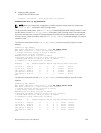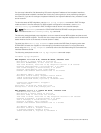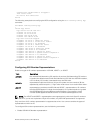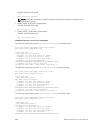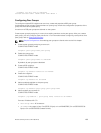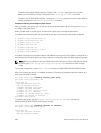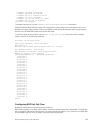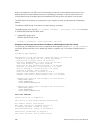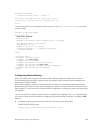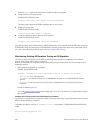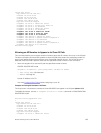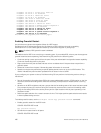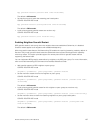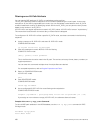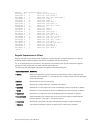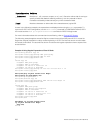
Notification History
'Connection Reset' Sent : 5 Recv: 0
Local host: 200.200.200.200, Local port: 65519
Foreign host: 100.100.100.100, Foreign port: 179
Dell#
To verify that fast fall-over is enabled on a peer-group, use the show ip bgp peer-group command
(shown in bold).
Dell#sh ip bgp peer-group
Peer-group test
fall-over enabled
BGP version 4
Minimum time between advertisement runs is 5 seconds
For address family: IPv4 Unicast
BGP neighbor is test
Number of peers in this group 1
Peer-group members (* - outbound optimized):
100.100.100.100*
Dell#
router bgp 65517
neighbor test peer-group
neighbor test
fall-over
neighbor test no shutdown
neighbor 100.100.100.100 remote-as 65517
neighbor 100.100.100.100 fall-over
neighbor 100.100.100.100 update-source Loopback 0
neighbor 100.100.100.100 no shutdown
Dell#
Configuring Passive Peering
When you enable a peer-group, the software sends an OPEN message to initiate a TCP connection.
If you enable passive peering for the peer group, the software does not send an OPEN message, but it
responds to an OPEN message.
When a BGP neighbor connection with authentication configured is rejected by a passive peer-group,
Dell Networking OS does not allow another passive peer-group on the same subnet to connect with the
BGP neighbor. To work around this, change the BGP configuration or change the order of the peer group
configuration.
You can constrain the number of passive sessions accepted by the neighbor. The limit keyword allows
you to set the total number of sessions the neighbor will accept, between 2 and 265. The default is
256
sessions.
1. Configure a peer group that does not initiate TCP connections with other peers.
CONFIG-ROUTER-BGP mode
neighbor peer-group-name peer-group passive limit
Border Gateway Protocol IPv4 (BGPv4)
193



